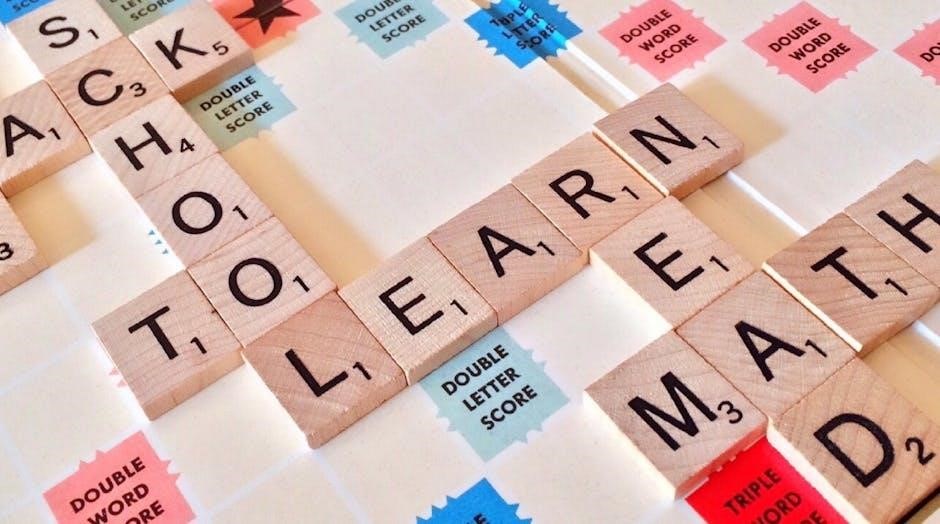
year 3 english worksheets with answers pdf
Stuck on Year 3 English? Download our FREE, answer-packed worksheets! Make learning fun and boost confidence with our engaging PDF resources. Get your Year 3 English worksheets PDF now!
Year 3 English Worksheets with Answers PDF: A Comprehensive Guide

Welcome to your comprehensive guide to Year 3 English worksheets with answers in PDF format! This resource is designed to support your child’s learning journey, offering a variety of activities and exercises tailored to the Year 3 curriculum. Access engaging material and boost skills today!
Year 3 English worksheets serve as a valuable tool in reinforcing key concepts and skills learned in the classroom. These worksheets, often available in PDF format for easy access and printing, are specifically designed to align with the Year 3 curriculum, targeting areas such as grammar, punctuation, reading comprehension, creative writing, and vocabulary development. They offer a structured approach to learning, providing children with opportunities to practice and consolidate their understanding of various English language concepts.
The inclusion of answer keys is crucial, as it allows for immediate feedback and self-assessment, promoting independent learning and helping students identify areas where they may need further support. These worksheets can be used both in the classroom and at home, offering flexibility for teachers and parents to supplement learning and provide additional practice. Furthermore, the availability of free and printable worksheets online makes them an accessible and cost-effective resource for educators and families alike. By incorporating Year 3 English worksheets into a child’s learning plan, you can effectively enhance their language skills and build a strong foundation for future academic success.
Benefits of Using PDF Worksheets
PDF worksheets offer numerous advantages for Year 3 English learning. Firstly, they are easily accessible and printable, allowing for convenient use at home or in the classroom. The digital format enables quick distribution and eliminates the need for physical copies, saving time and resources.
Secondly, PDF worksheets often come with answer keys, providing immediate feedback and allowing students to self-assess their progress. This promotes independent learning and helps identify areas needing improvement. The structured format of worksheets helps reinforce key concepts, ensuring a thorough understanding of grammar, punctuation, reading comprehension, and vocabulary.
Moreover, a wide variety of PDF worksheets are available online, catering to different learning styles and abilities. This allows teachers and parents to select resources that best suit the needs of their students or children. The use of engaging activities and illustrations within the worksheets can make learning more enjoyable and effective. By integrating PDF worksheets into the learning process, children can develop essential English skills and build a strong foundation for future academic success. The portability and ease of use make them an invaluable tool for both educators and parents.
Key Skills Covered in Year 3 English
Year 3 English focuses on building a robust foundation in several key skills. Grammar and punctuation are emphasized, including the correct use of conjunctions, tenses, and sentence structure. Students learn to identify different parts of speech and apply punctuation rules effectively. Reading comprehension is another crucial area, where children develop the ability to understand and interpret various texts, answering questions to demonstrate their understanding.
Creative writing skills are also nurtured through prompts and exercises that encourage imagination and expression. Vocabulary development is enhanced through activities that introduce new words and their usage. Spelling is addressed with targeted worksheets focusing on common spelling patterns and rules. These skills are integrated to ensure children can communicate effectively in both written and spoken form.
Worksheets often cover areas like using coordinating conjunctions, understanding nouns, verbs and adjectives, and mastering punctuation such as commas and apostrophes. Practicing these skills through targeted exercises helps solidify understanding and builds confidence. Regular practice with varied activities ensures a comprehensive grasp of Year 3 English concepts, preparing students for future academic challenges. The curriculum is designed to be engaging and supportive, fostering a love for language and learning.
Grammar and Punctuation Exercises
Year 3 grammar and punctuation exercises are designed to reinforce fundamental language skills. Worksheets often include activities focused on identifying and using different parts of speech, such as nouns, verbs, adjectives, and adverbs. Students practice constructing grammatically correct sentences, paying attention to subject-verb agreement and proper tense usage.
Punctuation exercises cover the correct use of commas, apostrophes, question marks, and exclamation points. Children learn how to use coordinating conjunctions to combine sentences and create compound sentences. Activities may involve correcting errors in sentences, rewriting sentences to improve clarity, or completing sentences with appropriate punctuation marks.
These exercises aim to enhance understanding of sentence structure, word order, and the rules that govern written language. Regular practice with these worksheets helps students develop accuracy and confidence in their writing. The exercises are often interactive and engaging, making learning grammar and punctuation more enjoyable. By mastering these skills, students improve their ability to communicate effectively and express themselves clearly in writing. The worksheets are designed to be both challenging and supportive, catering to different learning styles and paces.
Reading Comprehension Activities

Reading comprehension activities for Year 3 are crafted to improve understanding and analytical skills. These activities typically involve reading a variety of texts, including fiction, non-fiction, and poetry, followed by questions designed to assess comprehension.
Worksheets often feature texts tailored to the Year 3 reading level, ensuring that students can engage with the material effectively. Questions may include identifying main ideas, understanding character motivations, and making inferences based on textual evidence. Activities also encourage students to summarize passages and distinguish between fact and opinion.
The aim is to enhance critical thinking and the ability to extract information from written text. Regular practice with these worksheets helps students develop stronger reading habits and improve their overall literacy skills. These activities are often themed to match classroom studies, making learning more engaging and relevant. Comprehension exercises prepare children for standardized tests by familiarizing them with question formats and assessment criteria. By mastering these skills, students become more confident and proficient readers, capable of tackling more complex texts in the future. The worksheets are designed to be interactive and fun, fostering a love of reading.
Creative Writing Prompts
Creative writing prompts are invaluable tools for stimulating imagination and fostering self-expression in Year 3 students. These prompts can range from simple sentence starters to more elaborate scenarios, encouraging children to explore their creativity and develop their writing skills.
Worksheets often include prompts based on various themes, such as fantasy, adventure, or everyday life. These prompts might ask students to imagine they are a character in a story, describe a fantastical place, or write about a personal experience. The exercises aim to enhance vocabulary, grammar, and sentence structure while allowing children to freely express their thoughts and ideas.
By engaging with these prompts, students learn to craft compelling narratives, develop characters, and build vivid settings. Creative writing activities also help boost confidence in writing and encourage a love for storytelling. The prompts are designed to be open-ended, allowing for diverse interpretations and unique responses. Regular practice with creative writing not only improves writing skills but also enhances critical thinking and problem-solving abilities. Through imaginative expression, children develop a deeper understanding of language and its power to communicate ideas.
Spelling and Vocabulary Development
Spelling and vocabulary development are crucial components of Year 3 English education, and targeted worksheets play a significant role in enhancing these skills. These worksheets often incorporate a variety of exercises designed to reinforce spelling rules, expand word knowledge, and improve overall literacy.
Common activities include word searches, crosswords, fill-in-the-blanks, and sentence construction tasks. Spelling lists aligned with the Year 3 curriculum are frequently used, focusing on common exception words and phonetic patterns. Vocabulary exercises often involve defining words, using them in context, and identifying synonyms and antonyms. The worksheets provide opportunities for repeated exposure to new words, aiding in retention and application.
Regular practice with these activities helps children develop a strong foundation in spelling and vocabulary, which is essential for reading comprehension and writing proficiency. By engaging with diverse exercises, students learn to recognize and use words accurately and confidently. These worksheets are valuable tools for both classroom instruction and home learning, supporting students in their language development journey. Effective spelling and vocabulary skills are fundamental for academic success and lifelong learning.
Finding Free and Printable Worksheets
Locating free and printable Year 3 English worksheets with answer keys in PDF format is easier than ever, thanks to numerous online resources. Many educational websites offer a wide array of worksheets covering various topics, including grammar, punctuation, reading comprehension, and creative writing.
Websites like Twinkl, Education.com, and K5 Learning provide a plethora of free worksheets that can be downloaded and printed for classroom or home use. Additionally, some websites offer free sample worksheets, with the option to subscribe for full access to their resources. It’s also worth checking out educational blogs and forums, where teachers and parents often share their own created materials.
When searching for worksheets, be sure to use specific keywords such as “Year 3 English worksheets PDF” or “free printable Year 3 grammar exercises.” Ensure that the resources align with the current curriculum and learning objectives. Always review the worksheets before using them to ensure they are age-appropriate and accurate. With a bit of searching, you can find high-quality, free resources to support your child’s English learning journey.

Utilizing Answer Keys for Effective Learning

Answer keys are indispensable tools for effective learning when using Year 3 English worksheets. They provide immediate feedback, allowing students to self-assess their understanding and identify areas needing improvement. By comparing their answers with the correct solutions, children can pinpoint mistakes and learn from them.
For parents and educators, answer keys offer a valuable way to track a child’s progress and comprehension of concepts. They facilitate efficient marking and provide insights into areas where additional support may be required. However, it’s essential to use answer keys judiciously. Encourage students to attempt worksheets independently before consulting the answers, fostering critical thinking and problem-solving skills.
Answer keys can also be used as a teaching aid. Teachers can use them to explain complex concepts or demonstrate different problem-solving strategies. Regularly reviewing answer keys with students promotes a deeper understanding of the material and reinforces correct methods. Ultimately, the goal is to empower students to become confident and independent learners.
Integrating Worksheets into a Learning Plan
Seamlessly integrating Year 3 English worksheets into a structured learning plan can significantly enhance a child’s educational journey. Start by identifying specific learning objectives and aligning worksheets accordingly. For instance, if the focus is on grammar, select worksheets targeting punctuation, sentence structure, and verb usage.
Create a balanced schedule that incorporates worksheets alongside other learning activities like reading, writing, and interactive games. This variety keeps children engaged and caters to different learning styles. Consider using worksheets as reinforcement tools after introducing new concepts or as a review before assessments.
Regularly assess progress to identify areas where a child may need extra support. Use the insights gained to adjust the learning plan and select worksheets that address specific weaknesses. Remember, the goal is to create a personalized learning experience that fosters confidence and a love for English. A well-integrated approach ensures worksheets are not just isolated tasks, but valuable components of a holistic education.